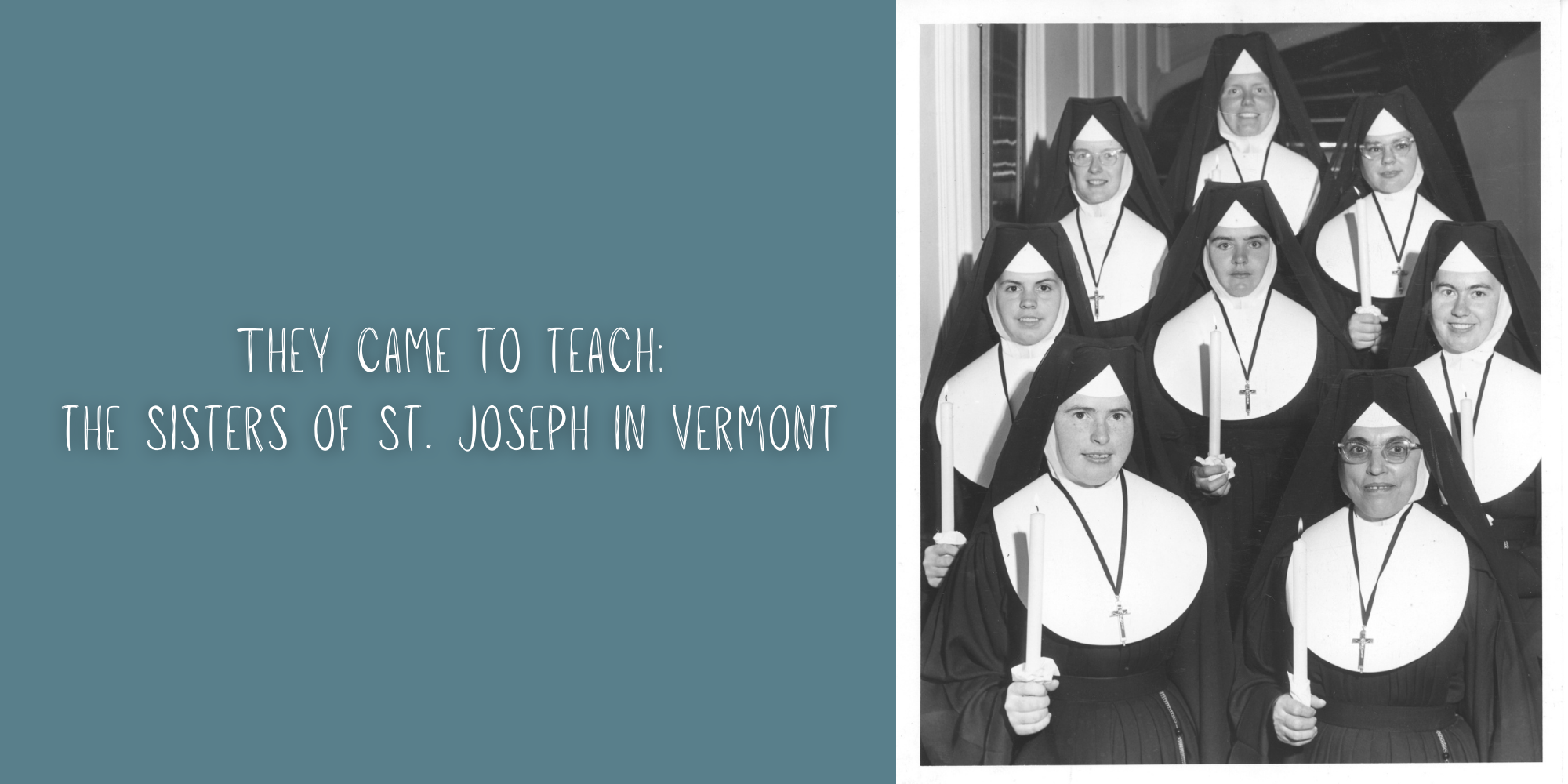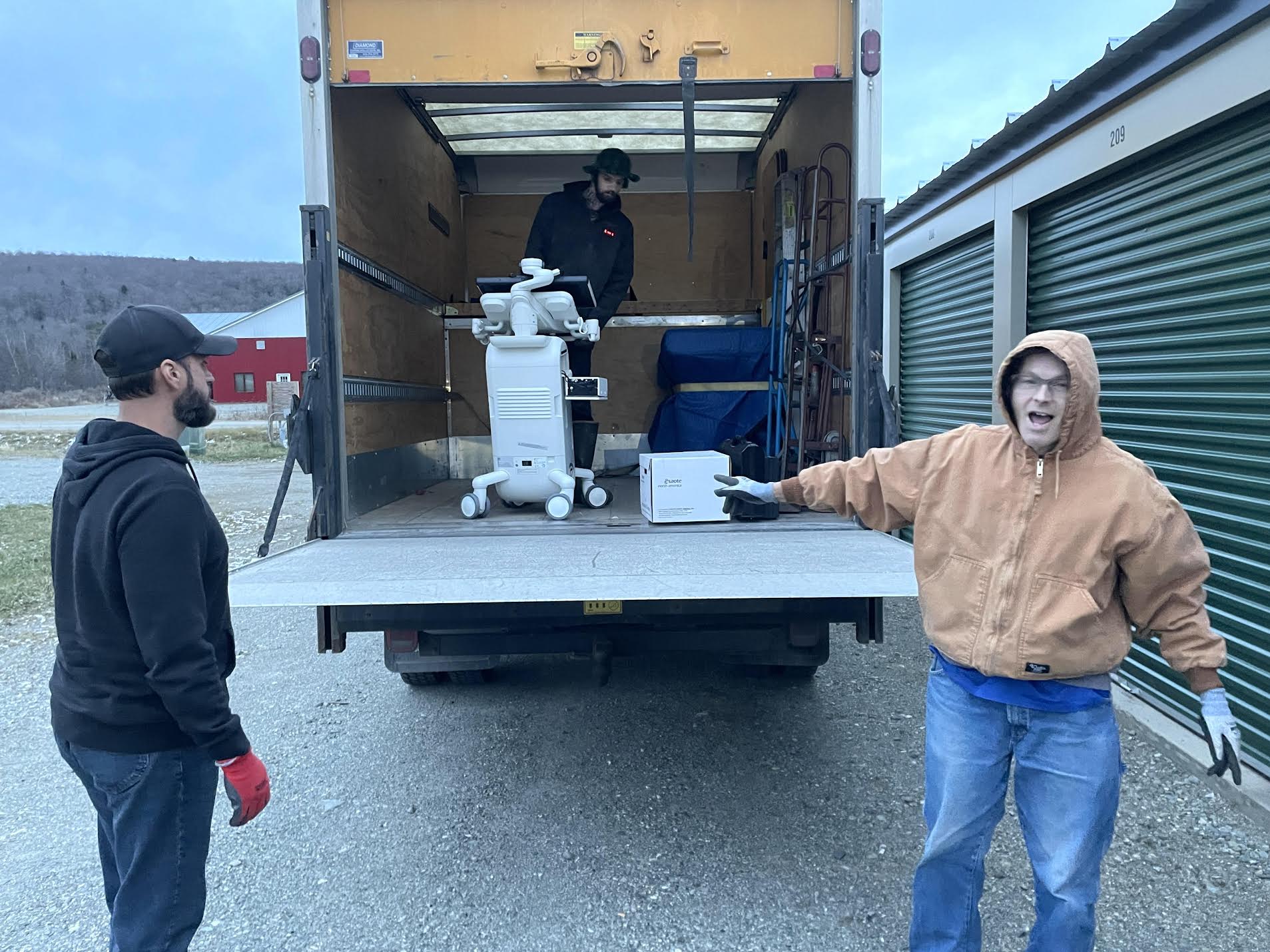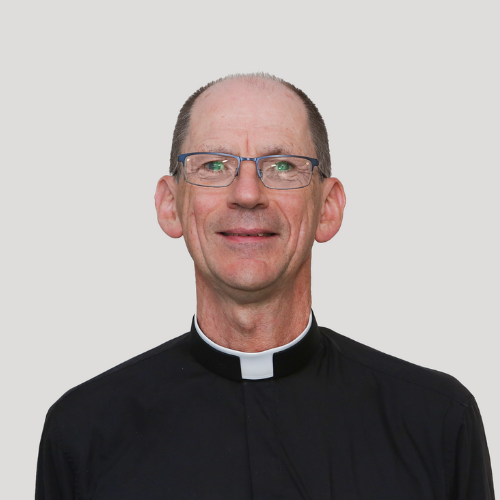
Religious communities of Catholic women have long been an integral part of Catholic education in Vermont, though their stories are seldom fully told. The histories of parochial schools often gloss over how they came to be staffed by nuns. The journey of the Sisters of St. Joseph to Vermont deserves closer examination.
St. Peter School, Rutland
According to the brief answers completed in 1899 by Father Thomas Gaffney, pastor at the time: “The first parochial school was opened … in a house on West Street with one teacher, and about 50 pupils. It was continued without intermission till 1865 when the old building became too small for its purpose. The next school, now the parochial residence, was built in 1867 and opened the same year with two teachers … [and] about 100 pupils in all. This was conducted by lay teachers till 1873. … Sisters of the order of St. Joseph from Flushing [New York] came to Rutland to take charge of them. …”
Many Irish families wanted their children to be educated in local schools. While school attendance was not compulsory at the time, secular schools in Rutland and environs expelled Catholic students for not attending classes on Holy Days of Obligation or even for refusing to own a Protestant Bible.
From France to the United States
The origin of this congregation of women religious is traced to Le Puy, France. The order was founded by Jesuit Father Jean Pierre Médaille in 1646 and was given canonical status under the patronage of St. Joseph in 1650. The sisters served rural Dioceses in southern France for the next 150 years until the French Revolution claimed many through imprisonment or martyrdom. The dispersed survivors were reorganized in Lyon, France, by Mother St. John Fontbonne in 1807. Through her work, the first community of Sisters of St. Joseph was formed in the United States in 1836 at the request of the bishop of the Diocese of St. Louis. The sisters spent the next 11 years there, growing their congregation and serving the community. From Carondelet, new communities were found in Philadelphia in 1847 and Brooklyn (Flushing) in 1856.
Father Charles Boylan, pastor of St. Peter Parish, had two cousins who were members of the Sisters of St. Joseph in Flushing – Sisters Borgia and Mary John Boylan. He hoped that his family ties would prove beneficial and wrote to Mother Teresa Mullen, superior of the Brooklyn congregation, in 1873 requesting assistance from the Sisters of St. Joseph. Mother Mullen, however, could not accommodate his written request. Father Boylan, unsatisfied with her reply, devised an alternate plan, and she found his in-person plea more effective. Mother Austin Keane, along with Sisters Irene Branagan, Patricia Lorrigan, Anastasia Brown, and Paul McGuire volunteered to teach in Rutland. They left Flushing on Sept. 5, 1873, and arrived in Rutland the following day. They began classes on Sept. 16, 1873.
Rough Times – Hope for the Future
The sisters’ early days in Vermont were marked by the challenges of making cultural adjustments to rural life. Within four years of their arrival, Sisters Anastasia, Irene, and Patricia died. Mother Keane returned to Flushing in 1874. Fire destroyed the old rectory that was serving as their convent in 1875. Meanwhile, more sisters from Flushing were sent to Rutland to encourage the hope of a successful religious community.
Despite discouraging defeats, Burlington Bishop Louis deGoësbriand decided that the Sisters of St. Joseph in Rutland should be formed into a separate congregation and not be dependent on a distant motherhouse. In a diary entry for August 17, 1875, he wrote: “Today I informed Mother Theresa [sic] suprioress of the house of the Sisters of St. Joseph, Flushing, Long Island, that I desired a separation and a Novitiate for our Sisters in East Rutland.”
Soon thereafter, the congregation in Vermont increased in number in large part due to local vocations and a steady supply of sisters from Flushing sent until the Vermont community could sustain itself. In 1879, Father Boylan built St. Joseph’s Convent in Rutland as a residence for the four sisters. What seemed like an extravagant endeavor to accommodate only four women religious in 1882 housed 20 Sisters of St. Joseph by 1886.
Principally devoted to education, the Sisters of St. Joseph taught students at St. Peter School, Christ the King School and Mount St. Joseph Academy in Rutland; St. Michael School in Brattleboro; St. Francis de Sales School, Sacred Heart School, and St. Joseph’s Business Schools in Bennington; St. Mary School in Fairhaven, and St. Anthony’s Kindergarten in White River Junction.
The sisters also staffed the Loretto Home for the Aged in Rutland for several years.
The Sisters of St. Joseph continued as a diocesan entity until they united with the Sisters of St. Joseph of Springfield, Massachusetts, in 2001.
Sharing in their neighbors’ struggles since arriving in Vermont in 1873 made them an integral part of the lives of the people they served in the Diocese of Burlington.
“Stimulated by the Holy Spirit of Love and receptive to the Spirit’s inspiration, the Sister of St. Joseph moves toward profound love of God and love of neighbor without distinction.”
Sources:
Gaffney, Rev. Thomas (ca. 1899). Questions for Historical Sketch – St. Peter Catholic Church, Rutland, Vt.
deGoësbriand, Bishop Louis. Diary of Louis deGoësbriand, first Bishop of Burlington, 1853-1899. Aug. 15, 1875. Burlington, Vermont. Archives of the Roman Catholic Diocese of Burlington.
Hannon, Rev. Patrick T., Davidson, Jim and Helen, eds. (2000). Home – A History of St. Peter’s Parish, Rutland, Vermont. Rutland, Vt. 37-75.
Malone, CSJ, Mary M. (2017). Anything of Which a Woman Is Capable – A History of the Sisters of St. Joseph in the United States, Vol. 1. (2017). Federation of the Sisters of St. Joseph. 397-410.
One Hundred Years of Achievement by the Catholic Church in the Diocese of Burlington, Vermont, 1853-1953. (1953). Lowell, Mass., 158.
Sisters of St. Joseph – Revised Constitutions. (1988). Introduction.
—Kathleen Messier is the assistant archivist for the Diocese of Burlington. For more information, email Archives@vermontcatholic.org.
—Originally published in the Fall 2023 issue of Vermont Catholic magazine.





